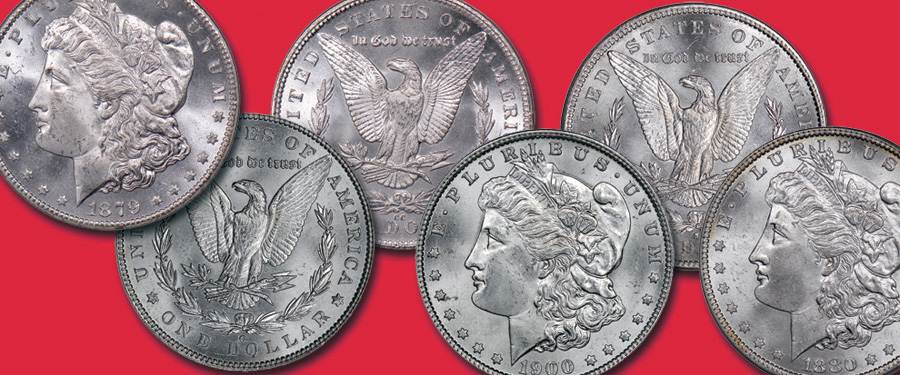
GS Asks:
Why do common date Brilliant Uncirculated Morgan dollars seem to vary in thickness from 2.4mm to 2.8mm? The Guide Book makes no mention of thickness of any coin meant for circulation and there must be a good reason why they don’t. Web sites that I deem unreliable, like Wikipedia, say a Morgan dollar is 2.4mm thick but my 1921 is 2.8mm and a 1886 is 2.56mm.
Answer from Tom DeLorey:
People tend to measure thickness at the rims, which vary in height above the field, rather than in the center of the coin. This is because they are afraid of damaging the coin, even though the thickness there should be more consistent. Note that on a Morgan dollar the rim has two elements, an inner ring of raised denticles and an outer, solid ring that is higher in relief than the denticles.
Rims on Morgan dollars vary in height because of the different ways that the Mints upset their Type One dollar blanks. The upsetting mills had channels that the blanks were rolled through to push metal inward and upward, above the level of the field of the planchet. The sides of those channels had different shapes to them that left different-shaped upset rims on the Type Two planchets, as seen on a collection of off-center dollars that came through ANACS while I was there. On many of the coins you could identify the Mint and/or the year, or at least get a good idea what time frame it was struck in.
The channels used in New Orleans were relatively flat, which left the highest part of the upset rim close to the border of the planchet. When struck, it thoroughly filled in the solid raised ring outward from the denticles, while sometimes leaving the denticles themselves a little weak. It also left the reeding on the edge of the coin relatively long. Look at the edges on a BU roll of O-Mint dollars in a plastic tube and you will see how wide, or thick, they appear.
The Carson City mills had a relatively deep V in them, which pushed the upset rim further in from the edge. Such coins typically have strong denticles but a weak or even missing outer rim, and the reeds on the edge are short.
The Philadelphia and San Francisco mints struck a better balance in the upsetting, giving you decent denticles and raised rim, and medium length reeding. Try putting an assortment of BU dollars in a plastic tube and see what I mean.





